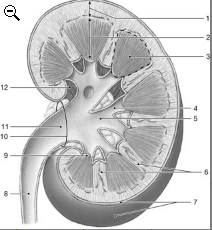Tom loves to soak in hot tubs and whirlpools. One day at a friend's house, he decides to raise the temperature in the hot tub as high as he could tolerate. After a few minutes in the very warm water, he feels faint, passes out, and nearly drowns. Luckily, his friend saves him. Explain what happened physiologically.
What will be an ideal response?
In response to the high temperature of the water, Tom's body shunted more blood to the superficial veins to decrease body temperature. The dilation of the superficial veins caused a shift in blood flow to the arms and legs and resulted in a decreased venous return. Because of the decreased venous return, the cardiac output decreased and less blood with oxygen was delivered to the brain. This caused Tom to feel lightheaded and brought on his unconscious state, nearly causing his demise.
You might also like to view...
Why is the scrotum, the sac that contains the testes, located outside of the body?
What will be an ideal response?
Night blindness is a result of a deficiency of what nutrient?
a. glutamate b. vitamin E c. vitamin B6 d. vitamin A e. zinc
Identify the structure labeled "4."

Define apoptosis
A) Apoptosis is the process of somatic cell division. B) Apoptosis is the process of gamete cell division. C) Apoptosis is uncontrolled cell division. D) Apoptosis is the breakdown of a cell by lysosomal enzymes after phagocytosis by a white blood cell. E) Apoptosis is genetically controlled cell death.